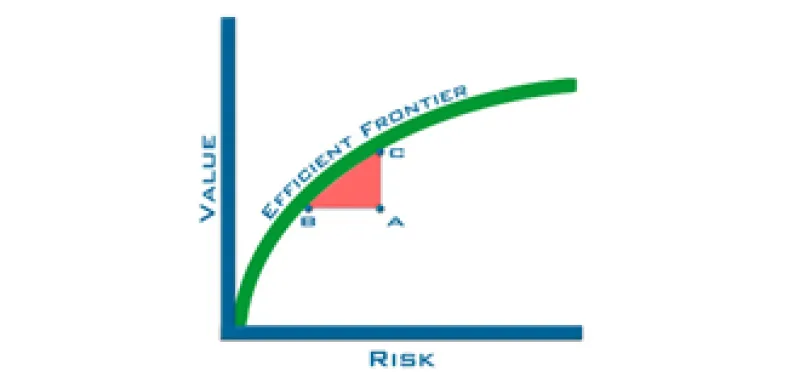

There is a misconception that allocating portfolios is simply a matter of running portfolio optimization software to find the “efficient frontier,” or the highest expected return for the lowest level of risk. While the efficient frontier is an important theoretical tool, efficient-frontier models suffer from three major flaws.
1. The efficient frontier is highly sensitive to inputs. Small variations in inputs (such as expected future returns of stocks and bonds) may lead to large changes in the optimal allocation. Since future rates of return cannot be estimated with high precision, efficient-frontier models are not very helpful in determining optimal allocations. While advisors use past returns for their model inputs, it is important to remember that past returns are not an indication of future returns.
2. Determining optimal allocations through efficient-frontier models requires describing investors’ risk preferences through a “utility function” — how much risk they are willing to take to grow their wealth each additional dollar (or how much their wealth would have to increase to make them willing to take an additional “unit” of risk). Although investors might have an instinct about such things, instincts cannot be input into mathematical models.
In addition, efficient-frontier models assume that investors’ utility functions can be expressed mathematically — even into infinity, but most academics agree that this assumption is very unlikely to be true. If it were true, it would imply that investors do not care about “fat tails,” such as extreme losses like those suffered in 2008. Most investors care considerably, providing another reason that mathematical efficient-frontier models fall short when modeling investment allocations for emotional human beings.
3. The efficient-frontier approach assumes a one-factor world, where the only risk factor is market risk. For the past 20 years, it has been known that stock returns are subject to three risk factors (market, size and value), and bond returns are subject to two additional risk factors (term and default). The efficient frontier is not a good representation of optimal portfolios in a multi-factor world.
So what is an advisor or investor to do? We feel that a better alternative for determining asset allocation recommendations is to use Monte Carlo simulations, based on each client’s financial objectives, tax assumptions and future return estimates.
There has been some criticism of Monte Carlo simulations, particularly regarding the use of future return estimates. (After all, we criticized this use ourselves earlier in this article.) The key is to explain that Monte Carlo simulation is a way to gauge the chances that plans will succeed or fail, but it is far from a certainty.
In our case, we err on the conservative side regarding our returns estimates. We have also had our methodology reviewed by academics such as Ken French to help ensure our methodology uses the best available assumptions in current academic research. That said, the best in current academic research is still just an estimate. In conclusion, we feel Monte Carlo simulation, not efficient-frontier modeling, is an excellent tool to help determine investors’ need to take risk and correspondingly, their asset allocation.
Larry Swedroe is principal and director of research for Buckingham Asset Management, LLC and BAM Advisor Services. He has authored or co-authored seven books, including The Only Guide to Alternative Investments You'll Ever Need. David Ressner is an investment advisor with Buckingham Asset Management. Click on the name of the author or the book title for more details.






